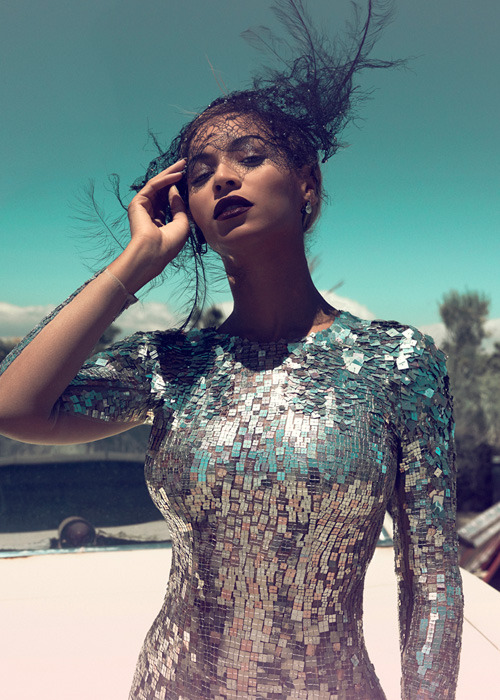by CAROL J. OJA
 Actress/songwriter/singer Beyonce PHOTO/Beyonce Palettes
Actress/songwriter/singer Beyonce PHOTO/Beyonce Palettes
Among her many gifts, Beyoncé Knowles-Carter is a virtuoso at fusing creativity, commerce and celebrity for maximum attention, deploying live performance alongside a complex array of media. On April 23, she dropped a surprise release called Lemonade, a sixty-five-minute work built on “Formation”, a video single. Also issued abruptly and strategically, the video for “Formation” turned up right before the US Super Bowl in February, offering a sneak preview of her portion of the half-time show, which was broadcast to millions. Featuring Beyoncé and her brilliant corps of female dancers, “Formation” asserted solidarity with Black Lives Matter and protested police violence against young black men. “Formation” spawned an international tour of the same name, which is currently underway, and it provoked a small group of police to protest outside a Houston concert, claiming that the show disrespected law enforcement. Its video (the one from February) provides a concluding segment of Lemonade, with some editing.
Dazzling and confounding, Beyoncé has both artistic depth and entrepreneurial savvy. Like most pop stars, she sings of lust and love, with lyrics that are often sexually explicit. Yet she increasingly aims her work at exposing racial and gender inequality in the United States, building on an illustrious history of black female creative artists.
Lemonade is a set of twelve dramatically linked songs. It appears in two formats: a “visual album” which is Beyoncé’s term for the video version, and an audio release, which fits into the well-known genre of “concept album”. The content of the two formats is closely related but not exactly the same, and the visual album is the primary focus here. Jam-packed with ideas, materials (both visual and sonic), and personnel, it is exquisitely produced and arranged, in a dizzying array of styles. While Beyoncé is the central performer, there are also guests, including Jack White, formerly of The White Stripes; Kendrick Lamar, a hip hop artist with a strong focus on social activism; and The Weeknd, a Canadian singer-songwriter of Ethiopian descent. Beyoncé’s young daughter Blue Ivy, her husband, the rapper and media mogul Jay Z and even Jay Z’s ninety-year-old grandmother Hattie make cameo appearances, as do the bereaved mothers of Michael Brown, Eric Garner and Trayvon Martin – young black men killed by police. Beyoncé fuses the musical numbers with a spoken narration (by her), which draws on writings by the Somali-British female poet Warsan Shire. Added to this, a steadily shifting collage of visual images adds dramatic depth. There is also a reflective current, offering an emotional reverie on the stages of grief provoked by romantic betrayal: Intuition, Denial, Anger, Apathy, Emptiness, Accountability, Reformation, Forgiveness, Resurrection, Hope and Redemption.
In the two months since Lemonade’s release, it has provoked an extraordinary cultural critique, with articles ranging from besotted fandom to probing essays about its racial and feminist politics. In fact, the visual album is simultaneously clear-as-a-bell and obscure, even at times surreal. In the “Denial” section, for example, Beyoncé falls off a very tall building, then is submerged under water. She floats like a ghost over a bed, ultimately striding forth from a building that suggests a seat of power, and she does so amid yet another surge of water. The omnipresence of water conjures up the devastation of Hurricane Katrina, which later moves to the foreground in “Formation”. The narrative ostensibly has an autobiographical thread, albeit with a celebrity tinge, with many critics claiming that it exposes Jay Z’s infidelity.
The Times Literary Supplement for more
